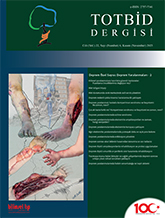
Children`s physiology is different from adults. This difference requires different approaches in many processes from diagnosis to treatment in various medical conditions. It is essential to know these approaches, especially in cases where it is not always possible to provide suitable conditions after an earthquake, to perform the first intervention and treatment of these patients more accurately and quickly. It has also been revealed how important the establishment of teams and hospitals for children after natural disasters is in reducing their mortality and morbidity. After the earthquake, injuries involving both orthopedic and other systems can be observed together. For this reason, it should be foreseen that pediatric patients with extremity injuries may need surgical teams and clinicians with experience in pediatrics. Extremity fractures of pediatric patients heal faster than adults. Although this is an advantage for conservative treatment, it will cause a delay in treatment in neglected cases. Compartment and crush syndrome is a severe cause of morbidity and mortality in these patients. Therefore, early diagnosis is essential. Fasciotomy is inevitable if there is a suspicion of compartment syndrome. However, it should be kept in mind that unnecessary fasciotomy in delayed cases will cause infection and rhabdomyolysis products to mix with the blood, so it may increase mortality. Amputation may be required in cases of crush syndrome with advanced muscle damage, in which the soft tissue is completely crushed, a severe surgical infection that endangers the child`s life, and ischemic gangrene.